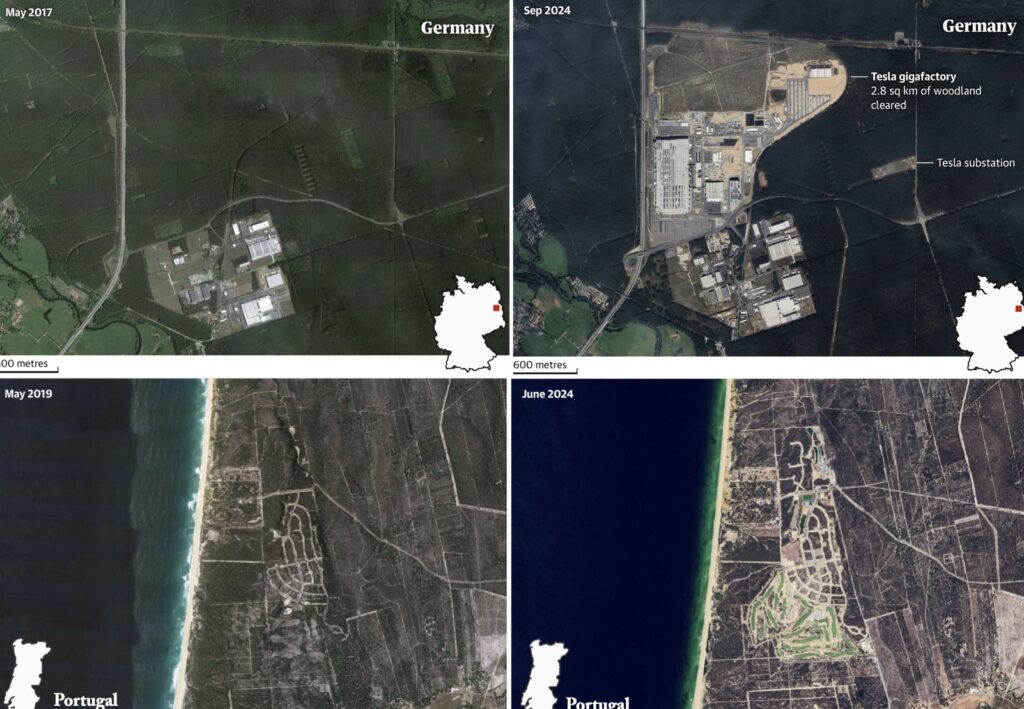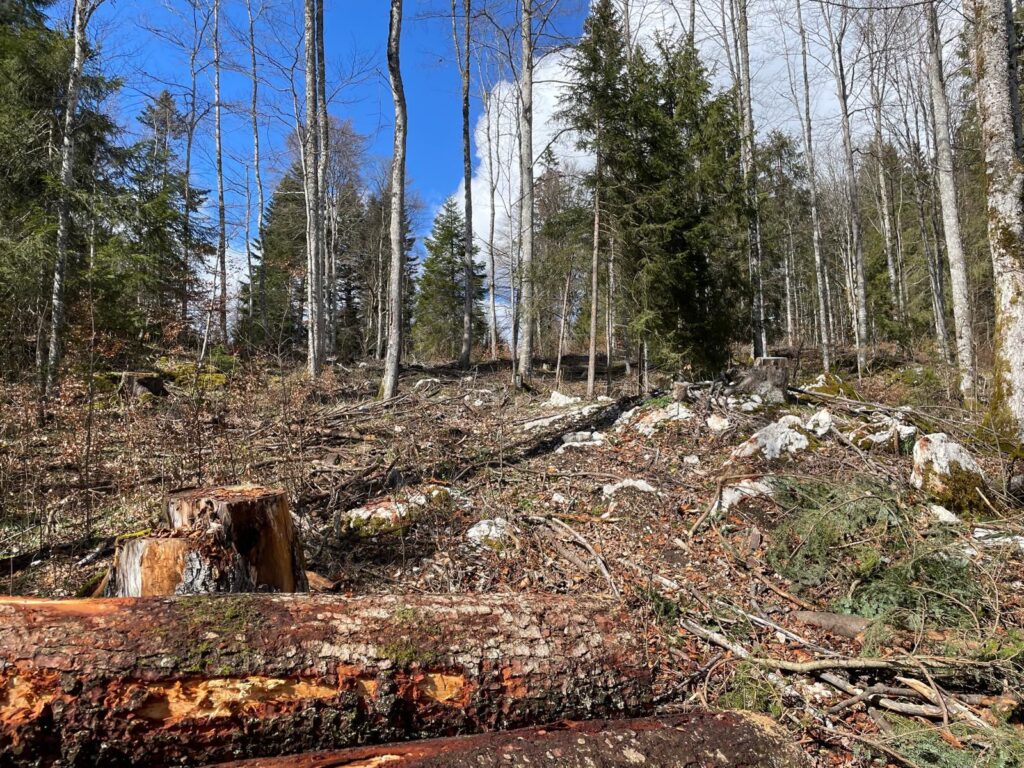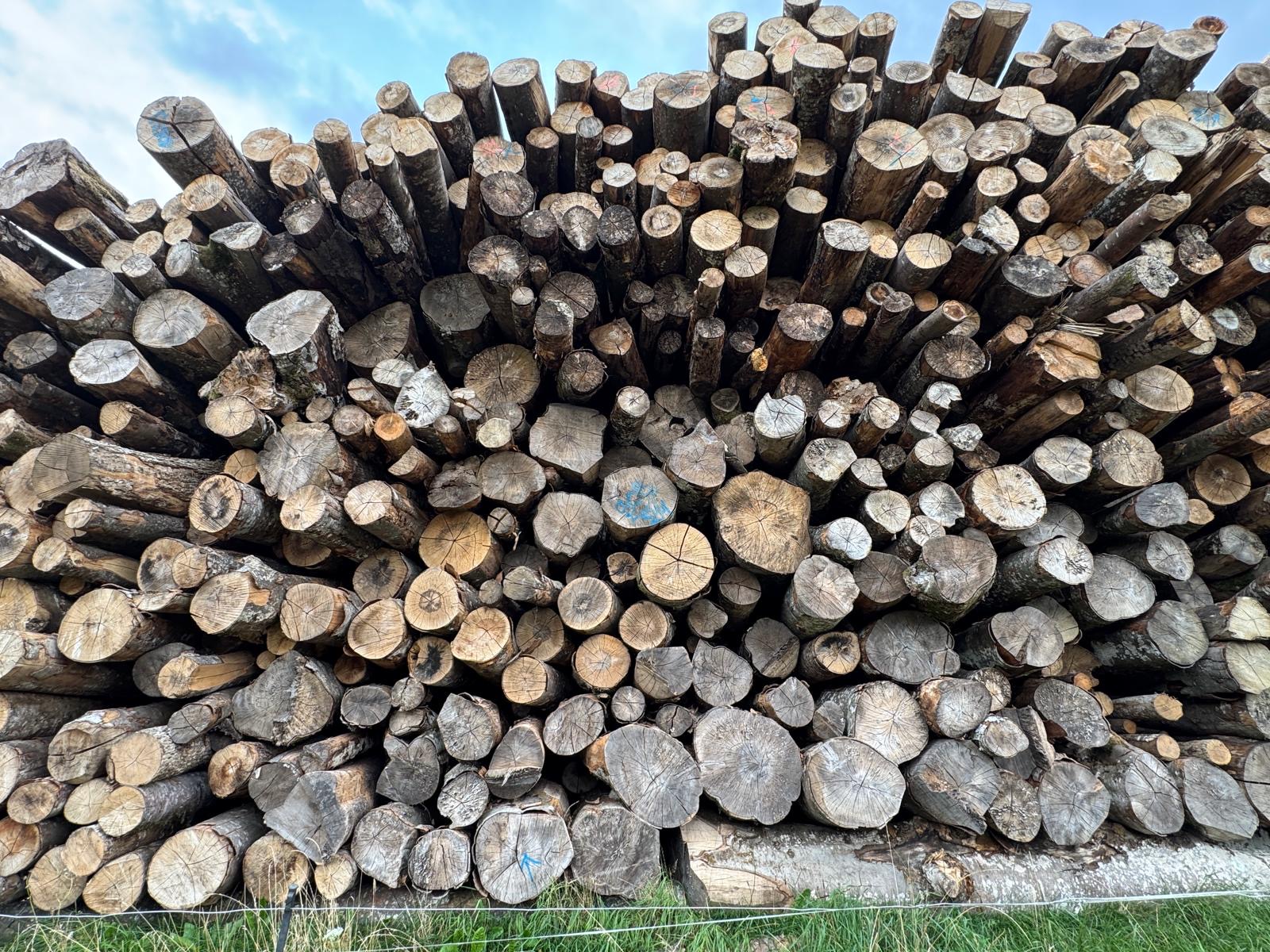Billions in subsidies for woody biomass – the false energy solution
Burning forests undermines emission reduction targets, threatens biodiversity, destroys forests and pollutes communities.
Nevertheless, billions in subsidies are paid to the timber industry worldwide for burning trees, which makes it impossible to achieve climate and nature conservation goals.
Read more about the alarming figures here.
Billions in subsidies support false energy solution
Billion in public money spent to support an industry that undermines emissions reduction targets, threatens biodiversity, degrades forests and pollutes communities.
To mark the International Day of Action on Big Biomass (21 October), the Biomass Action Network has released “Burning Billions for Biomass“, a report detailing how governments support the burning of trees to produce electricity and heat, with subsidies disbursed at every stage of the supply chain.
The figures are eye-watering.
- From 2002-2024, a handful of major economies spent almost US$250 billion on biomass subsidies, with the authors warning that these figures are incomplete and likely to be an underestimate.
- The UK which hosts Drax—the world’s largest biomass burner—disbursed £22 billion (US$29 billion) in subsidies from 2002-2023, no doubt explaining why UK households are burdened with some of the world’s highest electricity bills.
- The EU meted out €20 billion annually from 2015-2024, with €16 billion in 2023 and €9 billion in 2024. The report stresses that “these figures are likely an underestimate, but come to a total of US$193 billion.”
- Japan handed over ¥1.97 trillion (US$13 billion) from 2014-2024.
- South Korea shelled out ₩900 billion (US$689 million) in 2024 alone.
- Canada coughed up C$346 million per year on average from 2021-2024, totalling C$1.3 billion (US$996 million).
Energy companies are being paid directly to burn trees for heat and energy production despite the fact that we now know that burning forest biomass is not carbon neutral. On the contrary it increases atmospheric CO2 for decades. Industrial biomass production also drives the destruction and degradation of forests and biodiversity, and poisons and pollutes rural communities worldwide.
Biomass subsidies don’t just undermine our climate and nature goals, they make a mockery of Target 18 of the Global Biodiversity Framework (phasing out nature-harming subsidies).
These billions would be much better spent on energy efficiency and promoting real renewables. Biomass is a hugely expensive energy technology which only survives thanks to the misplaced largesse of western governments. Biomass plants are also being promoted and subsidised in Switzerland.
It is time to cut subsidies and not forests.
Is Pro Natura helping the timber lobby?
Pro Natura, Switzerland’s most important nature conservation organisation, published a report on the Bernese State Forestry website in which it praises, among other things, Switzerland’s timber reserves. These have been steadily increasing for decades – by around 1.5 million cubic metres.
What Pro Natura fails to mention in the article is that timber reserves, regardless of their size, say nothing about the condition of the forests. Nor do they say anything about whether a forest ecosystem is intact, whether biodiversity is high or low and even less about whether a forest is managed in a natural and sustainable way.
The significance of ‘high timber reserves’ can be understood by looking at the examples of Germany and Austria: Germany has the largest timber reserves in the EU, and Austria is also among the European leaders. Nevertheless, the forests in both countries are in a disastrous state and have long since become CO2 emitters. The photo (Canton of Bern, Switzerland) also impressively shows what a protective forest can look like after a so-called “near-natural forest management”, despite high timber reserves – it is remarkable that Pro Natura doesn’t seem to be concerned about this.
International Day of Action On Big Biomass 2025
On 21 October, protests against large biomass projects will take place worldwide under the slogan ‘Clear-cut subsidies, not forests’.
Wood-fired power plants around the world burn forests for electricity or heat – including in Switzerland. Organisations and scientists around the world are warning that wood burning and pellet production have a drastic impact on forests, biodiversity and the climate.
The main message of this year’s day of action against biomass is: no subsidies, no tax breaks, no incentives for the biomass industry, as these promote its expansion and destructive effects around the world.
Look here: Environmental Paper Network
New study on the harmful effects of wood burning presented at the European Respiratory Society Congress
The European Respiratory Society Congress took place in Amsterdam from 27 September to 1 October 2025. At the conference, another study on the dangers of wood smoke was presented. Scientist Dr Laura Horsfall from London told the congress: We know that burning wood at home causes harmful air pollution both indoors and outdoors, including carcinogenic substances. Professor Ane Johannessen, head of the expert group, added that there is a growing trend in Europe to install wood-burning heating systems, but these cause asthma, COPD and lung cancer.
People who heat with wood should be aware that they are harming themselves and their families, even if they use modern stoves. Neighbours without wood-burning heating systems are also exposed to a significantly increased risk of serious illness, because even closed windows cannot protect against the pollutants. (So say 53 British health organisations, Asthma Australia and Tasmania)
600 football fields of precious green spaces lost each day in Europe
We in the West like to point fingers at deforestation and land-use change in the Global South, but the time has come to take a look at what is going on within our own borders.
News outlets in 11 countries and scientists from the Norwegian Institute for Nature Research (NINA) did just that. They pored over five years’ worth of satellite images to determine Europe’s loss of green land.
What they found was sobering.
From 2018 to 2023, an area the size of Cyprus (9,000 km2) was lost to development.
That’s the equivalent of 600 football pitches… A DAY… being covered in bitumen, built on and bricked over.
This figure is 1.5 times higher than European Environment Agency (EEA) estimates whose methodology excludes areas below 5 hectares.
Small losses accumulate. And they count.
As usual, nature suffers first and foremost, with losses of some 900 km2/year, but we are also paving over around 600 km2 of farm land yearly, jeopardising our biodiversity, climate goals and food security.
Our continent is greying… in more ways than one.
Of the 30 countries analysed, the top five offenders were Turkey (1,800 km2); Poland (over 1,000 km2); France (950 km2); Germany (720 km2) and the UK (604 km2).
New housing and roads account for a quarter of this loss, but “climate friendly” projects and luxury developments and golf courses are also taking their toll.
Four egregious examples (shown here impressively with other examples)

Germany—half a million trees felled to build Tesla’s gigafactory near Berlin.
Portugal—almost 300 hectares of a Natura2000 site supposedly protected under EU law turned into a luxury development, offering multi-million dollar homes for sale and a new golf course alleged to require 800,000 litres of water a day to keep green.
Turkey—a rich wetland, once home to flamingos, pelicans and migrating birds, and acting as a natural flood defence, encased in over 1 km2 of concrete to host a luxury marina and yacht repair/building yard.
Greece—a rugged wilderness classed as roadless under domestic law soon to be studded with a massive wind farm.
And the excuses and greenwashing keep coming. These projects will help the environment as well as bring jobs, investments and an influx of wealthy visitors, proponents trumpet. Indeed, the Portuguese project has already attracted UK royalty eager to sample “the simple luxury of European living” on “the last untouched Atlantic coast in southern Europe.”
Not for much longer if the concreting continues.
In Europe, money talks, just like it does everywhere else.
And nature pays the price as politicians continue to pontificate, pander to their bases and promote competitiveness.
Photo: greentogrey.eu
600 football fields of precious green spaces lost each day in Europe
From 2018 to 2023, an area the size of Cyprus (9,000 km²) was lost to development.
That’s equivalent to 600 football fields … PER DAY… covered with asphalt, built on and filled with concrete.
Read more here
Federal Council misleads the public with inaccurate figures on wood combustion
Switzerland aims to become climate neutral by 2050 – among other efforts by replacing fossil fuels with wood combustion, which the Federal Council classifies as CO2 neutral. This is a misrepresentation in favour of the timber lobby.
The Intergovernmental Panel on Climate Change calculates CO2 emissions per megawatt hour (as quotes WWF Germany) :
Gas: 202 kg CO2, oil: 264 kg CO2, coal: 340 kg CO2, wood: 403 kg CO2
For methane, a very powerful greenhouse gas, and for dioxins, the most toxic chemicals to which humans can be exposed, the CITPA, an association of air pollution experts, calculates:
Per gigajoule: Coal: 1 gram of methane, 10 nanograms of dioxins; wood: 30 grams of methane, 40 nanograms of dioxins
Although methane decomposes much faster than CO2, it is a very powerful greenhouse gas: Over a period of 20 years, a single methane emission warms the atmosphere about 80 times more than the same amount of CO2. Over a period of 100 years, methane warms the atmosphere about 28 times more than CO2.
Such data raises serious questions about the operation and subsidisation of wood-fired power plants and wood heating systems.
Photo: Ecoenergy Valais
Life insurance forest – degraded to a raw material deposit
Swiss forests are increasingly being used and treated as a pure source of raw material.
Every year, some 4-5 million cubic metres of wood are harvested in Switzerland.
Of the 5 million m3, 2.6 million m3 are burned, as if this were the best thing to do. After all, according to the timber lobby and sellers of wood-fired heating systems, wood is a natural, regional and renewable raw material that combusts in a CO2-neutral manner. Let us take a closer look at those statements:
- This regional raw material is becoming scarce! The 2025 Forest Report (p. 61) from the Federal Office of Public Health confirms: “Usage exceeded net growth in the Jura (124%) and the Mittelland (116%).” Basel and Zurich are also running out of wood because too much is being burned.
- Global scientific studies show that wood can no longer be classified as renewable due to high demand. The frequently heard statement that “more is growing back than is being harvested” ignores the fact that an entire forest ecosystem has disappeared from the harvested site. The ‘more forest’ refers to some other place where a few tree trunks have grown thicker, not to more forest area.
- Wood is of course a natural raw material, just as tobacco and asbestos are natural as well. However, when wood is burned, huge amounts of fine dust and thousands of harmful toxins, 30 times more carcinogenic than cigarette smoke, are emitted.
- Contrary to popular belief and the claims of governments, authorities and the timber lobby, wood burning is demonstrably not CO2-neutral. On the contrary, wood burning emits more CO2 (and harmful substances) than fossil fuels, because the amount of CO2 emitted in the short time it takes for a tree to burn, is by no means reabsorbed by a regrowing tree.
The timber lobby also misleads people to believe that they are burning low-quality wood in their wood-fired heating systems, such as waste wood from carpentry workshops or branches and leftovers from timber harvesting for construction purposes. Far from it: today, machines weighing over 30 tonnes drive directly into the forest to chop up the felled trees on site for combustion, including the trunks.

The destruction of forests is glossed over. But forests, if not excessively exploited, are our life insurance:
- 42% of our drinking water sources are located in the forest.
- Forests protect villages and valleys from avalanches, rockfalls and mudslides.
- Over 70% of our biodiversity depends directly or indirectly on forests.
- Forests store CO₂ and cool our environment and our cities.

Please compare the size of the silage bales with the amount of wood that has been cut at the top of the cover photo!
September 2025
Wood shall no longer be considered “renewable”!
In Germany, the Federal Cabinet approved the draft bill to amend the Energy and Electricity Tax Act in the week of 1 September.
In the draft bill to amend the Electricity Tax Act, biomass, i.e. wood and biogas, is NO LONGER considered as RENEWABLE.
Only hydropower, wind power, solar energy and geothermal energy are to be considered renewable energy sources for electricity generation. If this amendment is approved by the Bundestag, wood-fired power plants will be treated in the same way as coal-fired power plants.
Of course, biomass experts describe this as ‘insane’, but facts and science are clear: due to high demand, wood can no longer be classified as renewable. In addition, it emits more CO2 than fossil fuels when burned, and the additional pollutants emitted are highly harmful to health (insane).
